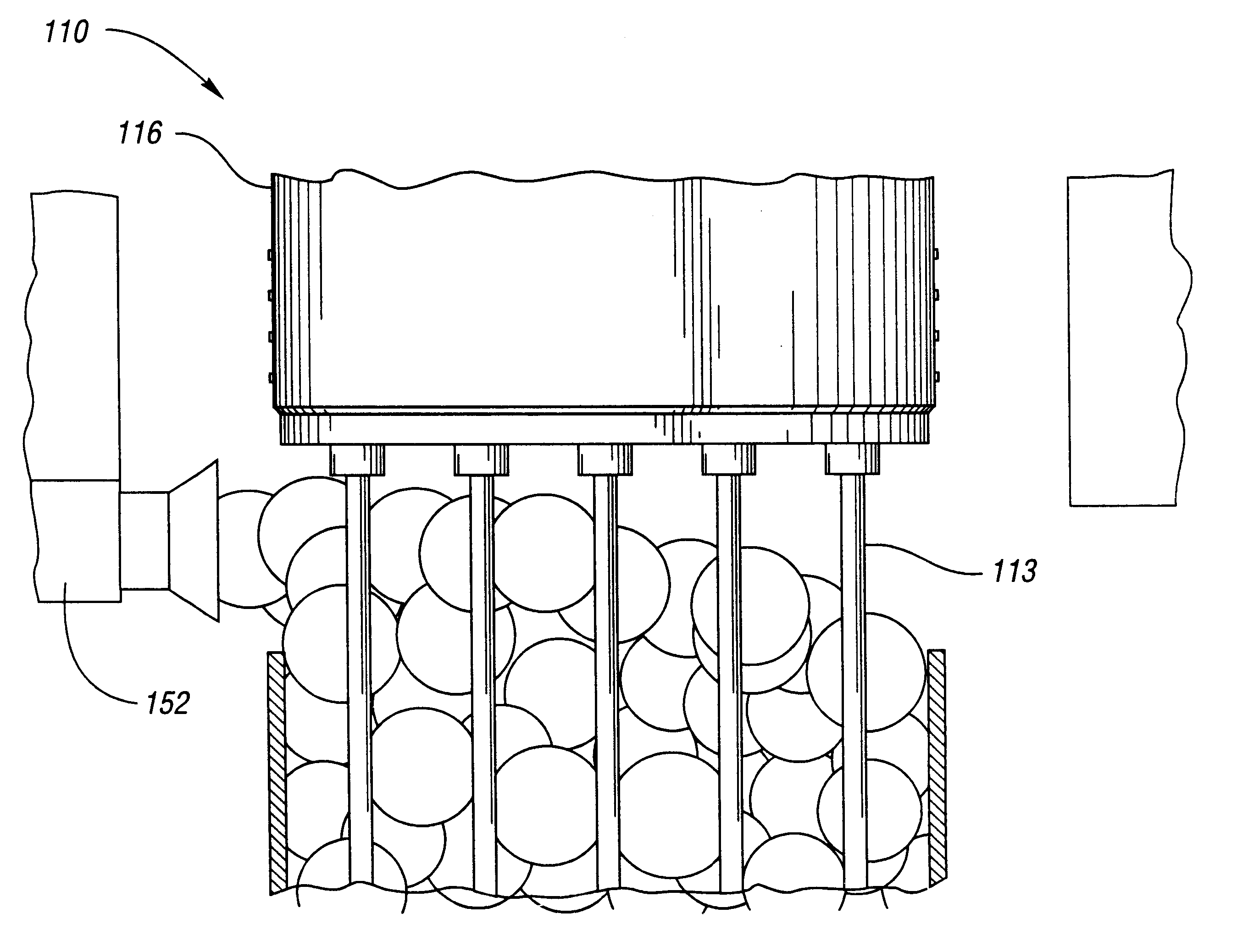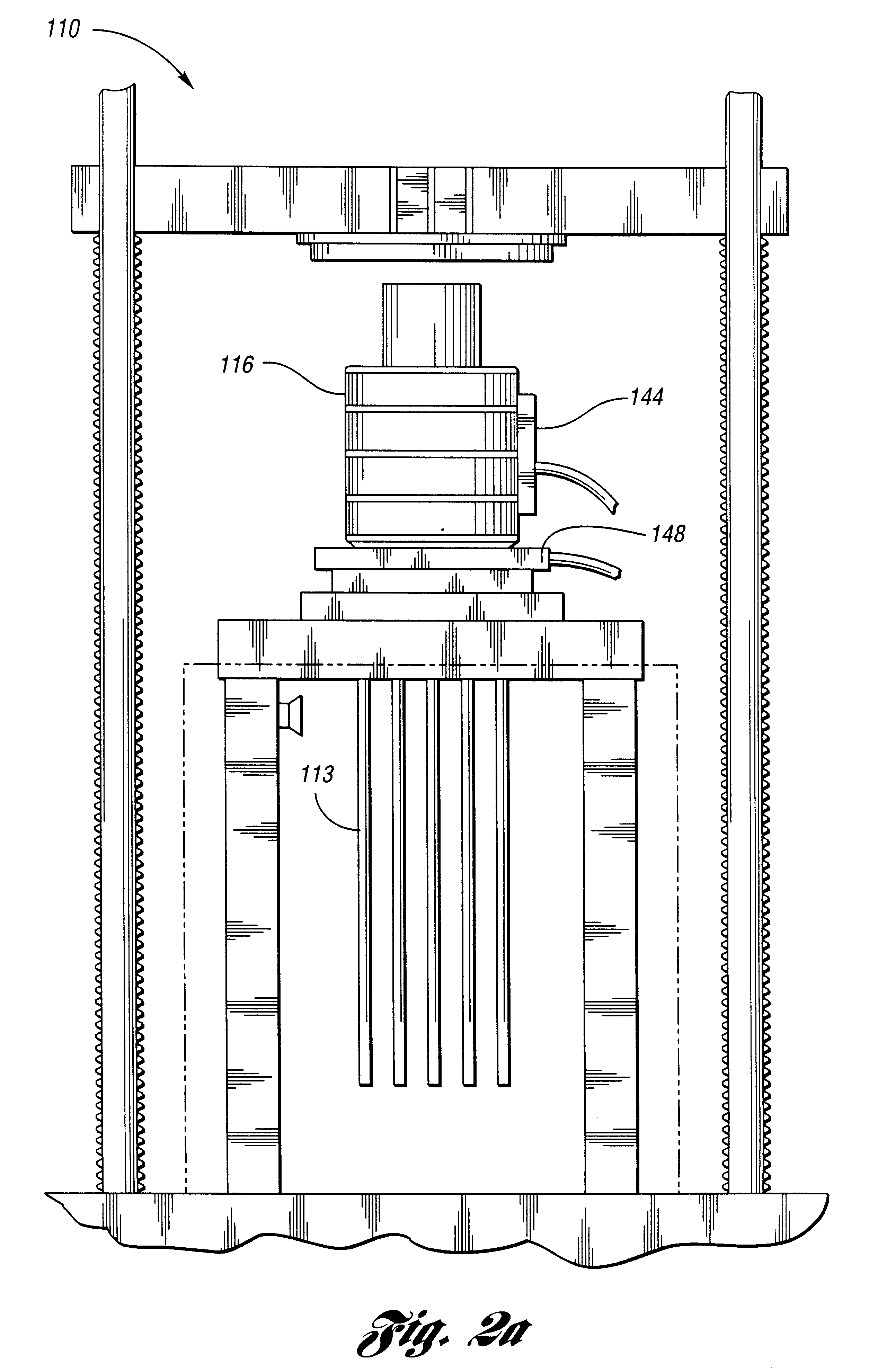Method of making a supported plurality of electrochemical extruded membranes
a technology of electrochemical extrusion and supported plurality, which is applied in the field of improving the method of manufacturing a supported plurality of electrochemical extrusion membranes, can solve the problems of increased vibration amplitude, the geometrical structure of such afc cannot be effectively used in a variable vibration environment, and the material waste of the accompanying mass cannot be effectively used. to achieve the effect of facilitating the support of the membran
- Summary
- Abstract
- Description
- Claims
- Application Information
AI Technical Summary
Benefits of technology
Problems solved by technology
Method used
Image
Examples
example 1
is of an electrolyte supported solid oxide fuel cell. In this example, Mixture 1 is a fully-stabilized micron-sized YSZ powder compounded with the special thermoplastic elastomer binder. Mixture 2 is made of the same yttria-stabilized zirconia (YSZ) powder in same binder but with sufficient toluene added to lower viscosity.
In particular Mixture 1 consists of 9.6 g Calprene.TM. (Dynasol Corp.), 1.4 g Styron.TM. 495R (Dow Plastics), 2 g paraffin wax #32721-2 (Sigma-Aldrich), 2 g paraffin wax #31765-9 (Sigma Aldrich), 1.4 g Picco.TM. 5140 hydrocarbon resin (Hercules), 2 g Flexon.TM. 845 (Exxon), 3.4 g Shellflex.TM. 371 (Equilon), 1 g AgeRite.TM. Resin D (R. T. Vanderbilt), and 44 g of yttria-stabilized zirconia (FYT 13.0-001 of Muscle Shoals).
In particular, Mixture 2 consists of all of the above constituents of Mixture 1, plus 25 g toluene, dissolved in at 50 degrees Celsius.
Mixture 1 is extruded at 130 deg C. Bubble surfaces are formed from Mixture 2 after the 19 tubes of diameter eac...
example 2
is of an electrolyte supported solid oxide fuel cell with the membranes having a stellate cross-section, instead of the circular cross-section of Example 1, in order to enlarge the surface area of the electrolyte. Each of the 19 tube extrusion dies consists of matching pairs of six-pointed star shapes with rounded corners and sharpest interior angles of 30 deg angular. The extrusion of Mixture 1 thus produces tubes with stellate cross-section and wall thickness of 0.2 mm and circumscribed outside diameter of 2.4 mm. Subsequent processing steps are as given in Example 1 to produce assemblages that can produce voltages. Because of the higher surface area, the power density is expected to be 30% higher than for Example 1.
example 3
is of an electrolyte supported fuel cell with highly active electrode layers immediately adjacent to the electrolyte. The extrusion and bubble surfaces are formed as in Example 1. However, an additional step is added at the stage of coating the anode and the cathode. In particular, after masking the sides of the hexagonal assemblage, a sol-gel precursor of gadolinia-doped ceria is applied to the inside of the 19 tubular membranes to form a 5 micron layer on the inside diameter. The remainder of the anode is formed by dip coating, as in Example 1. After firing, the highly active anode layer has a finer pore size and a higher electrochemical exchange current than is found in the bulk thickness of the dip-coated anode. To produce a similarly highly activated layer, after masking the top and bottom of the assemblage, a ceria-manganite-producing sol-gel coating is applied to the cathode side. The remainder of the cathode is formed by dip coating, as in Example 1. After firing, the highly...
PUM
| Property | Measurement | Unit |
|---|---|---|
| temperature | aaaaa | aaaaa |
| temperature | aaaaa | aaaaa |
| temperature | aaaaa | aaaaa |
Abstract
Description
Claims
Application Information
 Login to View More
Login to View More - R&D
- Intellectual Property
- Life Sciences
- Materials
- Tech Scout
- Unparalleled Data Quality
- Higher Quality Content
- 60% Fewer Hallucinations
Browse by: Latest US Patents, China's latest patents, Technical Efficacy Thesaurus, Application Domain, Technology Topic, Popular Technical Reports.
© 2025 PatSnap. All rights reserved.Legal|Privacy policy|Modern Slavery Act Transparency Statement|Sitemap|About US| Contact US: help@patsnap.com



